Resistance to Change
Some things can seem contentious but mostly they are not meant to be so. At least that is here on my blog. Highlighting an issue that’s causing a problem is not necessarily anything more than pointing out a need to change. It’s not an opportunity to jump on someone or something. At least that’s what I hope when I offer a blogpost countering something said or done. It’s unfortunate when things spiral out of control because often there is little you can do to stop it if it happens.
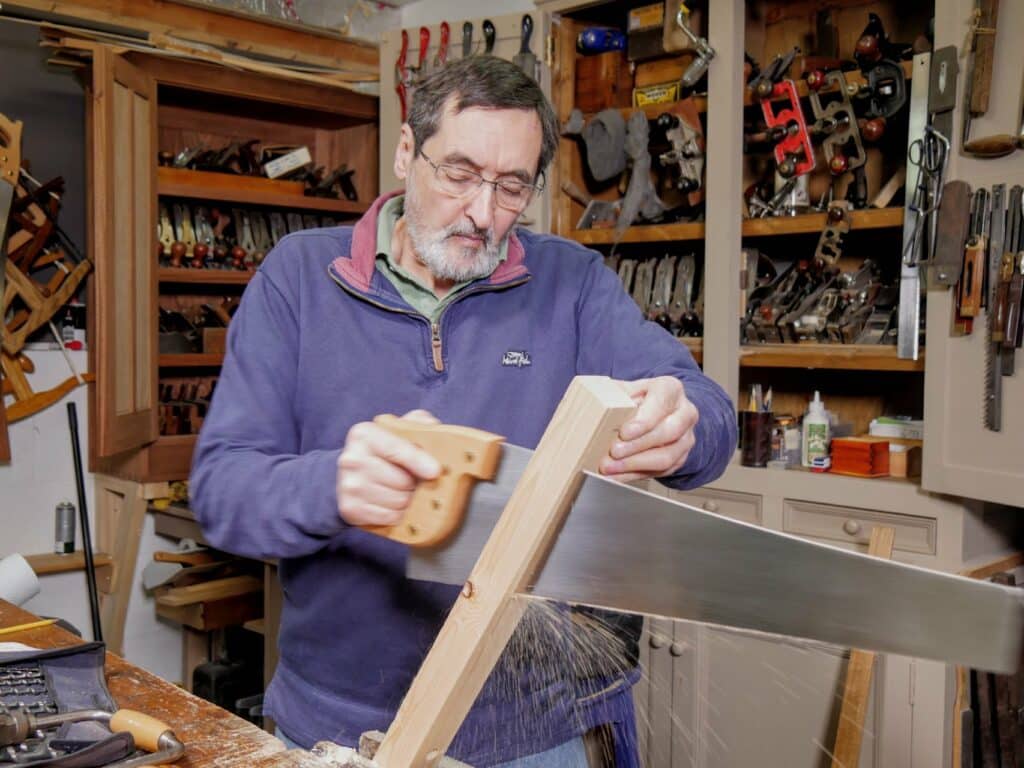
A saw that buckles under thrust-cuts and pull-cuts might result from the wood itself, the saw, and then the user too whether the user is experienced or not. Who knows what causes it sometimes? The same is true when a plane arrives unsharpened or miss-set or the bed of a spokeshave has a bump in the casting. Such is the result of mass making wherever that may be. These things happen and we must understand that the issue is not always us.
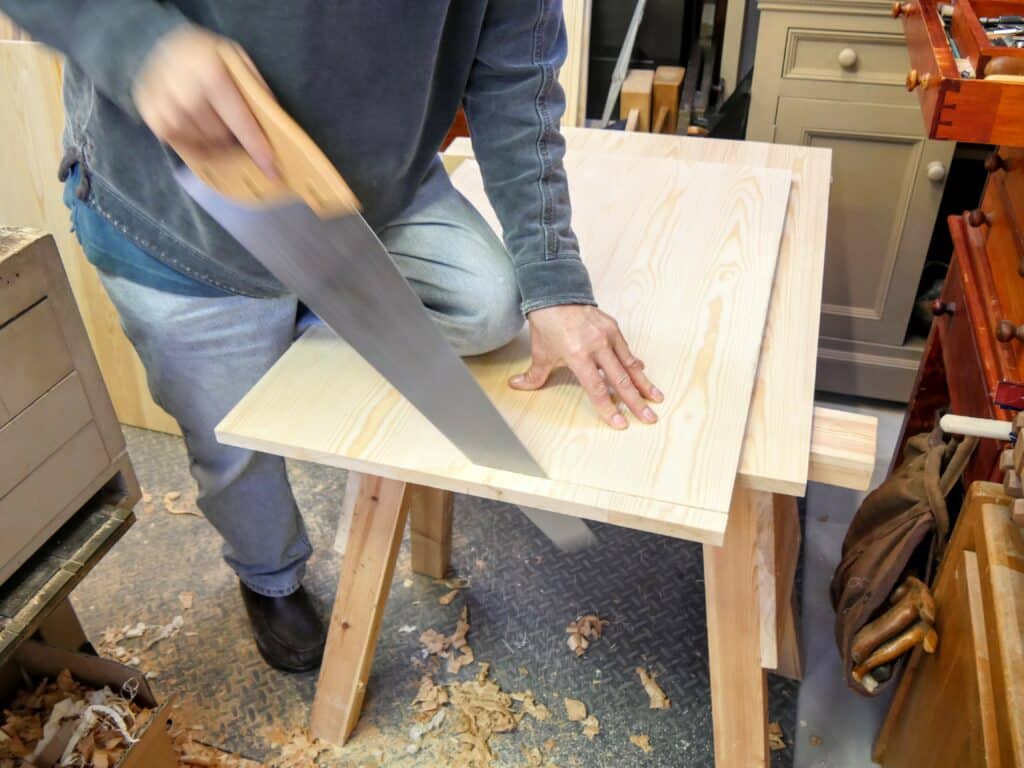
The issues I’ve raised at different times and then of late too are to point out problems with the manufacturing or the design that result in additional work. The sets in the saw post showed that it was too simplistic to say that the stud would indeed fit this or that saw by drilling a 1/4″ hole. In reality the extra work needed might well baffle someone new to woodworking and drilling metal to make the bolts go through the hole. Drilling a 1/4″ hole as directed wouldn’t work because for the wood to receive the stud itself it needed two holes larger than said and then a possible third hole of 1/4″ through the steel plate. Also, often the saw plate is too hard to be drilled with a regular twist drill because it has never been softened as with the teeth. I have had that result many times. Small things can make all the big differences. The dead flatness issue is something we all got caught up in and of course, wooden planes didn’t have the same issues as metal cast planes because the wood couldn’t be noticeably bent or flexed by hand in planing as can the cast metal planes and especially those longer than the smoothing planes. If you have never drilled metal there a few issues you need to know to do it like what type of drill bit do you use? Auger, Forstner, spur bit? Well, no, none of these will drill through metal and especially hardened steel.
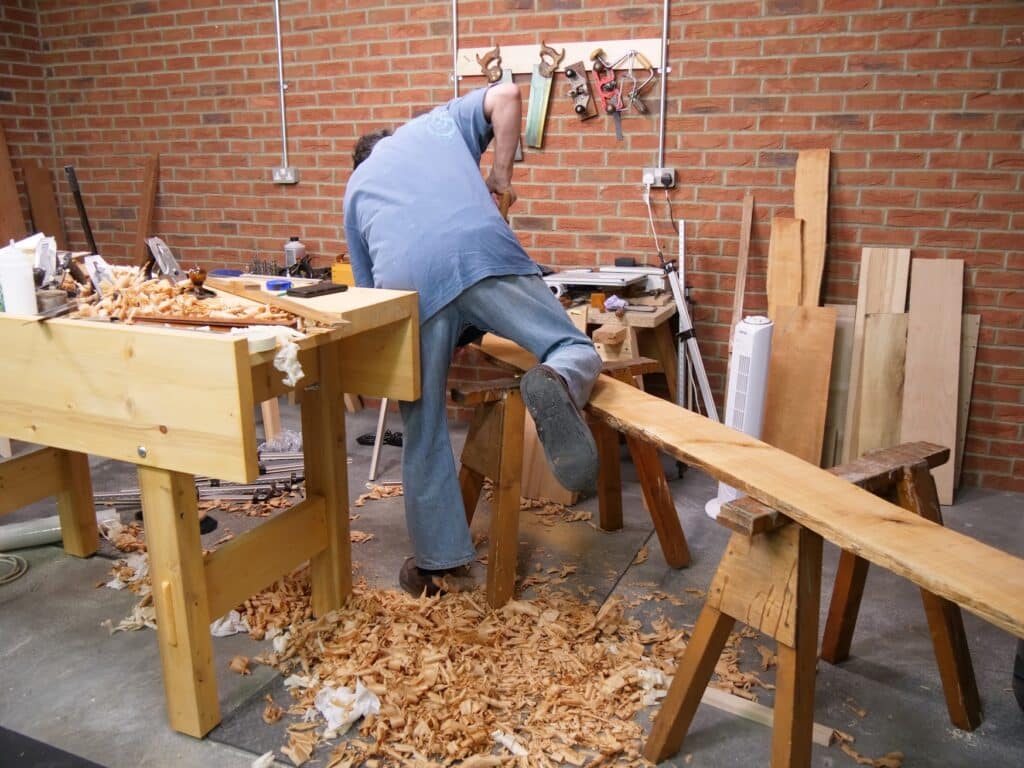
So many of you today acknowledge the reality that tools need sharpening and that you have conquered not just your own inability to sharpen but more importantly the intimidation you once felt. Venturing into woodworking has so many pitfalls but working your wood with hand tools introduces the importance of a tactile approach you cannot get without hands and hand tools working together. As sentient beings, we respond to woodworking differently when the tool becomes the extension of who we are, what we want and how we achieve the results we so enjoy. It is often the most difficult to explain this to those who shun the use of hand tools and never did use them. Even the ones that did often never mastered them and so a percentage of them are indeed likely to scorn those who use them. Paring that wood back to the face of a tenon or the recess of a housing dado with a paring action is still quite magical even for me after 55 years.
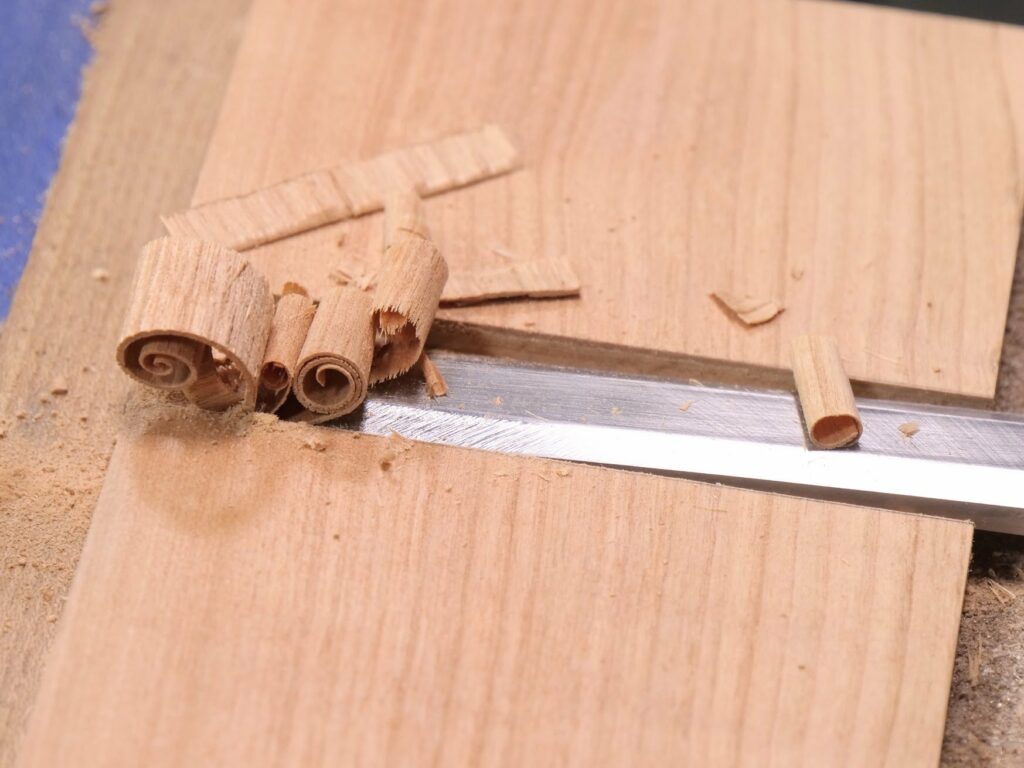
Tackling the flatness issue to make it less obsessive seemed important to me because I learned something from teaching the thousands of students and apprentices I worked with over the decades. I think the ratio was about 1 in 50 that came to class with mixed levels of obsessive compulsivity issues. Those new to sharpening watched and listened and then, when sharpening became necessary in the class, went to the sharpening stations and sharpened according to the patterns demonstrated. They were back to the woodworking with sharp and not so sharp tools in a matter of minutes. Those that approached it with an alternative method often spent ten times longer sharpening, snd then fell behind the rest of the class and even ended up holding the class up because the method or methods they had adopted seemed to replace the actual woodworking.
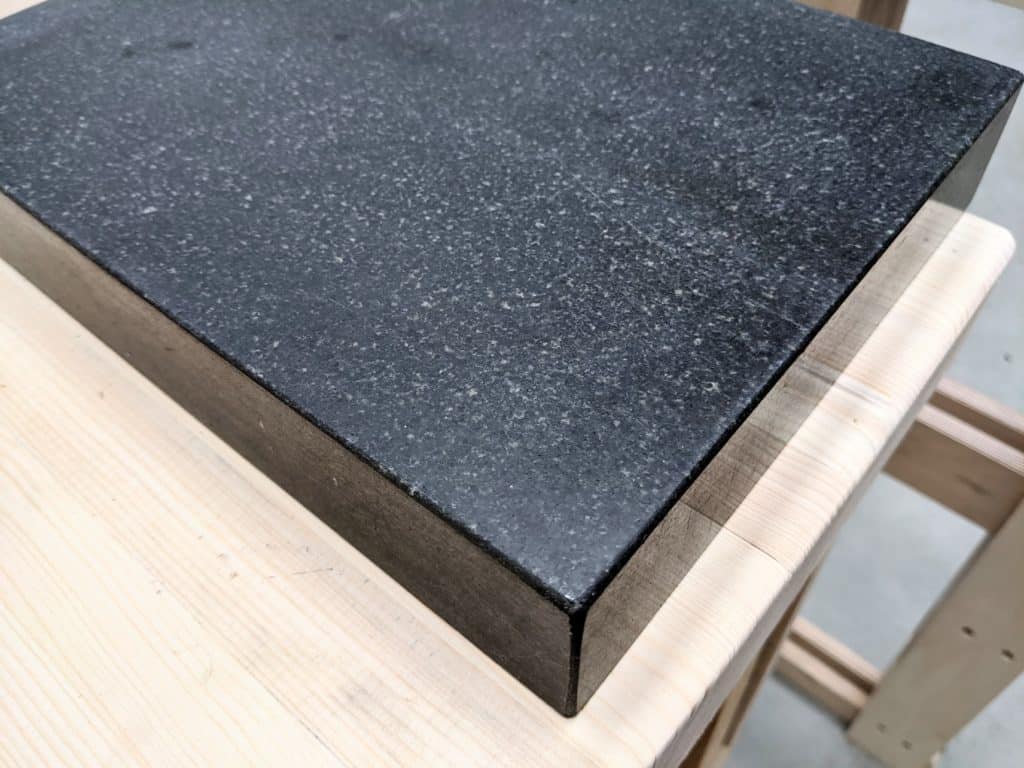
Something I do understand though is that many actually enjoy extending themselves into the sharpening. They enjoy the feeling and effort it takes and then too they simply like to peel off those onion-skin shavings one after another. In some cases, it wasn’t the joinery or the making of things they wanted but the sharp edge alone followed by shavings; pure shavings. Of course, micro bevels and so-called scary sharp systems are no different to and no sharper than freehand sharpening used through the millennia by artisans on every continent, even when using a honing guide with the three stones and the strop already set up and ready to go.
There is, I must say, the ever-increasing level of hype and spin these days that go with guruing. Just my very brief glimpses as to what’s available on YT makes me realise how hard it must be for new woodworkers especially to find the haystack never mind the needle. Many people just feel better with the practice they know and choose and then too they like the more legalistic approach because to them it seemed more risk-free. The freedom of freehand sharpening for me was as freeing as never starting with training wheels but with the two-wheeler pointing slightly down the incline and learning to first balance with my legs spread sideways until I got it. My dad nudged me off and kept me upright for the first yard or two and then I was off. In many cases, we put off what we really need to do to master the skills.
Well, remember that for the salespeople the end product is not the thickness of a shaving or even a project because their end product is the sale. Ultimately they enjoy seeing statistics resulting in the bottom line. One owner of a catalogue company here in the UK said to me, “All that matters to me and my company is the bottom line.” That’s understandable. He was in the business of making money, had no interest in woodworking per se and liked traveling to buy in stuff, do deals and so on. But I also know one or two where the service is the most important and the resultant sale is the outcome of genuinely putting their customer first. I think I could name several makers and sellers, distributors and so on, who have that approach. Maybe one day I should publish the list of my own suppliers who have truly served me well.
So many things I write are not intended to be critical but more a critique intended to shift from compulsive to intuitive. That said, I admit it is compulsive of me to always count 30 times when I strop my tools on the strop and many of the other things I do in the mix of things. If I appear hard, harsh or rigid sometimes, I apologise. When someone suggests I try this or that or shift from this to that it’s usually not because I am so rigid or resistant to change but that I have either tried it and found it lacking or at least less acceptable or I simply know what I want altogether.
You all have that nice day now!


Please do publish that list. It’d be nice to support a company that cares. Hopefully you havd such a list for thf US also. Thanks for what you do!
Nice to see that familiar old Tool Cabinet in the background (1st photo) and the newer-build cabinet filled now. I miss seeing them.
I suppose they were a distraction. Many times I missed what Paul was saying while my attention was drawn to all the tools in the background which I aspired to own one day. Thank goodness for video-rewind function. Otherwise I’d have missed a lot more.
Nice article. You are wise, and a good guy.
Greg
Scary sharp… a dull chisel is scary sharp for me, because you must force it to make it work (and, ironically, it doesn’t work!) and while doing so you go out of that dynamic equilibrium where the tools is used safely.
I use diamond plates free hand and the strop. It’s easy, fast and efficient. I like planing more than sharpening; some minutes on the plates, strop for a while and to the wood again.
I guess hand tool woodworking as a way of living is related to being free from the grasp of the modern market where there is a special device or equipment or accessory for every task. We can make furniture enitrely by hand tools, we modify our tools according to our needs or preferences, we even make some of the tools we need. It is then difficult to accept a sales pitch from someone who has the duty to maximise the profit of his company, especially when the product they offer doesn’t let you tweek it, personalise it, upgrade or retrofit it. Moreover, it takes the skill out of your hands and puts it in their product. “You just need to push the button.” No, I need to make it myself and, in the process, become better at making and in making, gain more freedom.
Imagine surfing inside a tunnel and having a cable hooked up to you to follow the line and then the angle of perfect conformity!
It’s a funny thing, back in 1965 a sales rep came in the workshop with a power router to sell it to the boss (a snob who knew nothing about woodworking). The craftsmen all stood around as he set it up. An hour later he was ready to recess his hinge. The size was sloppy and one of the men took a 1″ chisel and recessed the second hinge in under a minute and to perfection. Of course, ultimately the power router won to the point that no one recesses hinges by hand much anymore. In fact, talking to a graduate of a famed woodworking school recently, I discovered that he had had to recess a hinge by hand and that he was “scared to death” he might mess up. I suppose the difference was recessing a hinge at college is not the same as recessing thousands of hinges over the years in the day to day of being a woodworker using hand tools. You do get the speed up as you go and because you are dealing with non-standard components to install, freehanding becomes a consistent need and part of your life.
“Freehanding becomes a consistent need and part of your life.” This is one of those concepts that you can feel for quite some time and when you read it as a short sentence, it becomes clearer and you now know yourself better. Now it is my sentence too!
I can proudly say, dear Paul, that your teachings are making me a woodworker. I have still a long way to cover, but I am glad for what I have learned to accomplish until now. But I never imagined that I would become a better engineer because of you. It is the freehanding you teach: it gives you freedom not only in movements, but also in thinking, in searching solutions for the problem at hand, in going off-script and improvising, in the cross-discipline use of tools and materials. …I’m better in the kitchen also, especially with the knife.
I can now understand better your tag line “a lifestyle woodworker”, not by reasoning, but by starting to taste this lifestyle.
Years of experience comes one day at a time.
It is definitely hard finding the haystack on youtube. Especially when they have affiliate links to purchase the items they are showing in the videos. They get money for every view of their videos PLUS every item someone purchases from the links. And a lot of times the salesman(their “sponsor”) will link that video on their own social media sites, driving even more thousands of views and hits to the site. So you kind of see “oh this guy must know what he is talking about, look at all those views!”
I recently bought the Spear & Jackson panel saw and tenon saw you have recommended in the past, and I almost want to personally thank Spear & Jackson personally for providing me and many people like me – who don’t have a lot of funds – with an unpretentious tool I can afford and use to enjoy woodworking. They may not be pretty, but I think they are providing a great service in the true tradition of tool making by producing a good quality tool any woodworker can use, work and afford. I’d also like to thank you, Paul, for the suggestion.
Curiously, I have never seen another woodworker on YouTube – or anywhere else – recommend either of these saws, or any “cheap” tool for that matter.
Why do you think this is?
I have high respect for someone saying “I apologise”. It is humbeling and not many people want to be humble.
When i started with woodworking and sharpening my tools a year ago und spend hours just to flatten the sole of my plane, plane irons and chisels because i didnt know how far i had to go. I spend more than 1 hour with a medium grit diamond stone flattening my plane and the same with one pretty bellied 30mm chisel. That was quite frustrating but i thought i needed as an initial sharpening process.
I bought both a 10″ and 12″ Spear and Jackson saw with their ‘modern’ handles in the early 1960s and they have both served me well ever since. They have not had the constant use that a full time woodworker might have put them to but they are still as good as new.
The company produced a small pamphlet, ‘Concerning Saws’, (which I have in front of me), which tells of the history of the saw and of their 200 years’ experience of saw manufacturing. It also shows how to sharpen and set the saw – exactly in the manner Paul shows in his videos.
As a result of watching Paul’s videos I finally got around to re-shaping the handle of my 10″ saw and it makes such a difference. One of these days I’ll make time to reshape the other one.
Funny how 30 passes makes that perfect polish!
When I first started stropping my edges I would count to ten strokes and look at the edge. Then ten more and then kept going until it was perfect. I came to the conclusion that thirty strokes would give me the perfect mirror finish.
Sometime later you said in one of your videos that 30 strokes was about right.
That’s when I knew I was doing it right! Besides it’s easier to keep going counting to thirty and not stoping to look at the edge or having to reset your angle of approach again.
A while back I purchase 4 Spear & Jackson saws, two for me, two for a friend. The goal is to make two of them into rip saws. I have done mine, my friend has not. I don’t have much to compare them with but the two I kept seem to work just fine.
I was wondering, since you recommend these saws so frequently and they fit the price target of so many woodworkers, would it be worthwhile if you did a video taking a newly purchase saw and showing everyone your magic in modifying it to meet your needs. One saw, beginning to end. It seems it would be a valuable service to many and probably help bring even more woodworkers to purchase these saws.
I still use training wheels to sharpen my tools because I have tried freehand on numerous occasions and ruined the fine edge that I had and then spent 10 – 15 mins with the honing guide to get it back. Same with saw sharpening. I have come to terms with the fact that I can’t do it like Paul so I stick to the way I know. I bet there are many just like me out there. I still get the project done, but a bit slower than the teacher. I am happy with that!!
And there is nothing wrong with it either. Give it a year and try again, see how it feels then.
I agree. Just as you recommend the use of your ‘mortising guides’ as a temporary aide, using the 3-M microfinishing film on a sheet of glass with a rectangular wooden block is just another teaching aide (‘scary sharp’ is not silly or stupid if it helps some people). I also agree that for some people a jig may become a permanent crutch but that’s OK too because not everyone has the luxury of the practice time required to get good at a manual skill. I like your freehand method, but I personally feel no shame to still use a jig when I need one (eg to sharpen a rabbet plane etc).
One other small consideration re: “ impossible for anyone with the kind of equipment we have access to use to get a meeting face to a bevel truly dead flat”. Thousands of people have learned the technique of metal scraping first published by Joseph Whitworth about 1840 so maybe some of your readers could also choose to learn it (it’s actually only just another manual skill done with hand tools)? Thank you once again for all your teaching, it’s wonderful to have access to an experienced tutor.
.
3-M microfilm is not in any way a teaching aid but simply an expensive abrasive supported in filming whereas a mortising guide and a honing guide can be seen as something that trains and enables the muscle and the senses to ultimately sense and recognise positioning, angles and so on. Especially is this so if indeed they are seen as a stepping stone to an ultimate mastery that does eventually come to most people striving for freehand mastery. Your use of the term “crutch” seems inappropriate to me, too. As it is with many things, we often need support when we get started with something new. I would say it took me just a few hours over a few weeks to develop the honing skills I have used throughout my life. Out of the 6,500 students I have taught, most of them had it and the confidence by the end of a six-day hands-on class. Some did indeed need the guide, perhaps 1 in 100, but readily gave it up when their confidence increased. As it is with training wheels, the important thing is to ultimately want to take them off because the training wheels ultimately hinder the free flex you get with just two inline wheels. So, temporary support replaces crutch in my book.
My son asked for assistance with a ply door on a factory unit.
It had three locks fitted…..these needed changing and the door needed planing on the closing edge.
I see so many doors with a square edge, this should be tapered
( undercut) to close properly)
I was given a wooden 9″ plane the other day, not wanting to use my Stanley number 4 and risk damaging its sharp edge. ( I have several already but could not refuse a kind offer)
IT WAS A REAL TREAT TO USE, I had sharpened it before I left.
People around smiled as I used my little mallet to adjust but the resultant shavings impressed them
The bottom line is,Paul, that you are a trusted Master Craftsman, hence, your opinion at least for me, is going to have great weight.
Are the Spear & Jackson saws taper ground? Having used a couple vintage Disston saws that have a great feel compared to 1980’s era saws of unknown manufacture, there is a difference. I’m wondering if it was the taper grind that made it feel better?
Kirk H,
I’m pretty sure that the new S&J panel saws are NOT taper ground. If they were, then by simply measuring the thickness of the plate (using a vernier or a micrometer) at both the top or back of the plate and near the bottom or near the teeth would reveal that the thicker part of the plate would be near the teeth.
I’m not sure how much of a difference this taper grinding makes as the set of the teeth on a plain non tapered plate cuts a kerf somewhat wider than the plate anyway thus allowing clearance of the plate as it’s reciprocated through the cut.
Your writing is a joy! So refreshing and affirming. Many thanks!
Paul,
Don’t worry about resistance to change or contentious folks getting concerned about your views.
I want to know what you think, how you do things, not a dissertation on the various ways things might be done. What do you like or dislike etc.
We all feel like we are part of this. It’s pretty special
Having worked as an optical machinist I can tell you we worked to those obsessive tolerances since specifications were often sub micron. (.001 mm)
I can also tell you those types of tolerances don’t work when doing wood working. A wood shop just doesn’t have the means of measuring “dead flat”, plus it would be a waste of time if you could get your tools that flat anyway.
When I first got interested in hand tools I admit I used surface grinders and milling machines to flatten plane soles and irons. For the most part a plane sole if badly scratched or gouged can benefit from a skim cut on a machine tool with a follow up lapping operation on a granite plate with abrasive paper.
For my own wood working I use a diamond plate for setting the bevel angle and an oil stone and strop to finish up. I do it free hand and sharpen often. That works great with high carbon steels used in traditional tools.
My point is I watched YT people talking about “dead flat” and assumed they meant it as I understood flat. Not so, the thing about wood working is it frees you from micrometers, and dial indicators that’s the beauty of it. Projects need to look perfect not be mathematically prefect. Achieving that does not require obsessive flattening and polishing of one’s tools.
I’m not there yet, my dovetails have gaps but my tools are sharp and more importantly it’s fun to see my pieces go together even if they are imperfect. Besides put something “perfect” under greater magnification and the errors jump out.
Preach brother preach! When a friend brought over one of her fathers wood transition planes, she asked if I could clean it up a bit so she could put it on display. I told her I would not, but that i would show her how to clean it, tune it and how to sharpen the blade. In :30 she was making lovely shavings and could not believe it, she was saving up to buy a new plane she had seen at a woodworking show… she had no idea that the plane could work so well. $200 saved, she bought me lunch. A fare deal.
“Maybe one day I should publish the list of my own suppliers who have truly served me well”
That would be helpful. It seems to be getting harder and harder to find good places to do business with.
I do find it odd that some people find offense to someone giving their opinion. I always look to people that master something for their opinion. I like to watch and listen in hopes that I could do what they do some day that that level. Thanks foe sharing your insight and knowledge.
Paul, I absolutely love all you YT videos and advice. It’s so refreshing to learn off a true master and understand the rational behind the methods and processes. Thank you so much!
Paul, one of the things that made you stand out, to me at least, is your no-nonsense commentary on what you see and believe in. Judging by your popularity, I think others appreciate it as well. Please don’t stop. I always know I can count on you to tell me your honest and unbiased opinions.
My Dad would often press down on a strip of wood with his knee to keep it still as he sawed through just as in your photo . But for newcomers it might be better to advise them to use a few clamps either end to minimise saw twisting and buckling. (By the way do ladies try to keep wood still like that . Say no more squire .)
But that brings me to clamps . Mainly the ones with grip levers and colourful plastic pads. The main construction is a thick steel bar . In use they are poor . They are so rigid and delving inside the covers you see there is so little flexibility in anything so the closed position is exactly where the jaws stop , but without any parts flexing to maintain a grip . A cheaper clamp ,in all plastic ,works perfectly with not too much pressure. It has some flexibility and keeps it`s grip .
A new problem ocurred this week when I bought an old Stanley hand drill with enclosed gears. I remember my open gears one trying to tangle up my pullover half way through drilling a hole. But was the newer drill perfect ? No. The handle is plastic on steel. Very closely moulded and it kept sticking and jamming. Oiling made no improvement. In fact a small change in room temperature was enough to create a stop start friction . Not a relaxing tool to use . I cut off the winder shaft and fitted a furniture bolt with a 3 inch clear shaft and an M6 thread on the end. Two washers and a strip of plastic biro tube gave me a nice loose fitting handle with the M6 nuts and some locktite to secure them .The drill is now in bright yellow (gear part) with bright red (biro tube handle ).
The pros and cons of steel and plastic .
The honing of a chisel can be done on a flat piece of softwood. I have normally used Solvol Autosol from the time I saw the idea in a magazine. Hardwoods may work well too but I still need to try that .
Lately I have finished by concentrating on the edge by holding the chisel an inch from the blade and rubbing the edge in a figure of eight always with the sharp edge trailing . Similar grip to holding a pen . Just a few inches to and fro after checking where the tilt of the blade just starts to “catch” on the wood. That shows the angle is right . My final quick check is done along the raised edge of newspaper. If it slices cleanly on the whole cutting edge line that`s good enough . I don`t need to do any more strops if that works . I wonder why American newspaper is so stiff . Anyway it works on softer English paper . One top American violinmaker saw my description about Solvol and said “I`ve never heard of that “. He buys the wrong magazines .
You can’t just trail the edge in a figure of eight as fifty percent of the time the edge will be pushed into the grit not trail.
Spent years and years searching for that needle. Learned things along the way but what a revelation when I found your teaching. Love it when I hear you confirm things I had suspected but didn’t have the depth of experience and skill to know for sure. Questions answered and confidence built. And if your knowledge, skill, and teaching virtuosity weren’t enough, you top it off with common sense philosophy of living and working that unfortunately is anything but common. Thanks for sharing so much with so many. Your legacy is no small thing.